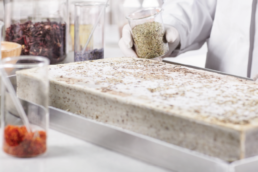The global fertility services market is estimated to reach $45 billion by 2027. This opens up a massive opportunity for startups to innovate in the space. One of the most innovative startups is INTIN, the creator of a male sperm analyzer called OVIEW-M, which uses the camera on a smartphone to analyze sperm counts. They are also the creators of an at-home ovulation tester that uses salvia instead of urine samples.
The Rise in Male Infertility
According to a new report by Transparency Market Research, the global market for male infertility treatments is expected to reach $5.4 billion by 2025. This significant growth is driven by several factors, including an increase in the number of men seeking treatment for fertility issues, advances in fertility technology, and a growing awareness of male infertility. As more men delay fatherhood until later in life, there is an increasing demand for effective fertility treatments. However, men are still reluctant/embarrassed to visit a hospital for their infertility issues. The OVIEW-M allows men to get the analysis they want from the comfort of their homes.
How does OVIEW-M work?

A semen sample is collected in a chamber and photographed and analyzed using AI vision technology via the APP. By using the smartphone’s camera, the app can detect not only sperm concentration but also the sperm’s motility.
The app works by taking a video of a semen sample and then analyzing it for sperm concentration and motility. The results are displayed on the screen within seconds. According to INTIN, through a study of 200 participants, the accuracy for sperm concentration was 99.1%, and mobility analysis was at 99.3%.
While there are other methods for measuring sperm count, they are often expensive and require special equipment. INTIN provides a convenient and affordable way for men to check their fertility at home. OVIEW-M is currently priced at $60.
The app has the potential to help couples who are struggling to conceive. It could also be used by men who want to monitor their fertility for other reasons, such as before cancer treatment.
The Rise in Fertility Treatments for Women
There has been a growing market for fertility treatments for women in recent years. This is due to several factors, including the rising cost of healthcare, the increasing availability of fertility treatments, and the growing number of women delaying motherhood. According to a report by Market Research Future, the global market for fertility treatments is expected to reach $33.5 billion by 2025.
There are many reasons why at-home ovulation test kits have become increasingly popular in recent years. For many women, these kits offer a more convenient and affordable way to track their cycles and ovulation. In addition, at-home ovulation tests can provide valuable information about a woman’s fertility and help her to plan for conception. Some newer generations of at-home ovulation test kits even allow women to record and monitor their menstrual cycles on their smartphones. Unlike most at-home ovulation testers, which use urine, INTIN has created an ovulation tester that uses saliva.
How does OVIEW-W work?

As ovulation day approaches, salt levels start to increase in the saliva due to the rise of estrogen hormones. Therefore, by using salvia instead of urine, tests can detect 24 hours before ovulation startups. In addition, it is far more sanitary using saliva over urine.
Users simply take a saliva sample and place it on the testing strip. The app photographs the dried saliva pattern using the smartphone camera and analyzes it. It will detect whether or not the woman ovulated and the best days for conception. Unlike the standard urine test, which can take 15 minutes, results from the saliva test can come back in only 5 minutes.
INTIN
INTIN is already one of the top healthcare IoT startups in Korea and they are now looking to expand into new markets, such as the United States. They are currently waiting on its FDA and IVDR clearance. In addition, they are presently developing at-home respiratory kits to go along with the current line of fertility products.
Popular
Related Posts
Creator Economy Startups in Korea Empowering Content Creators
November 10, 2022




